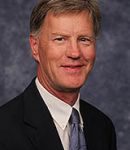Funeral Director to be honored for role in 1972 Rapid City flood
 In the 50th Anniversary year of the 1972 Rapid City Flood, funeral director Ozzie Osheim will be awarded, on October 21, the Monsignor O’Connell Founders Award of the Catholic Social Services for his humanitarian role helping to care for the 238 who died in the then community of 40,000 people.
In the 50th Anniversary year of the 1972 Rapid City Flood, funeral director Ozzie Osheim will be awarded, on October 21, the Monsignor O’Connell Founders Award of the Catholic Social Services for his humanitarian role helping to care for the 238 who died in the then community of 40,000 people.
The Rapid City Flood, according to Wikipedia, was caused by unique atmospheric conditions that caused “intense rain (to) began on the afternoon of June 9 and continued until after midnight on June 10. The immense amount of rain the Black Hills received during the thunderstorms ranged from 4 to 15 inches, causing Rapid Creek and surrounding creeks to overflow and creating massive amounts of runoff that resulted in flood waters. The run-off carried rubble to the Canyon Lake Dam creating a barrier in front of its spillway. This resulted in the “increase in depth of water behind the dam of 11 to 12 feet,” which caused the release of more water adding to the already moving floodwaters.”
According to this article from the Rapid City Journal the three funeral homes in the city collaborated to care for the 238 deceased. Here’s a short excerpt from the article, “Funeral directors were heroes who guided grieving families through the process of burying flood victims; 238 people died in the flood.
Osheim had been a funeral director for about 20 years at the time of the flood. Rapid City was a community of 40,000 people with three funeral homes in 1972. When the flood hit, amid the chaos the owners of the funeral homes got together on the first day of the disaster to try to plan for the unknown.”
Here is more of what was said in the article about the collaboration of the funeral homes, “During the first two days of the flood, Behrens Funeral Home was dry, with electricity and running water. Campbell Paula Funeral Home lacked electricity or running water, and Catron Funeral Home had about 5 inches of water in its basement. . . . .Bodies were taken to Behrens and Campbell Paula during the first two days. Catron’s basement had to be pumped out and dried. . . .
. . . There were a lot of long, long hard days. It was very difficult. It wasn’t as difficult for us as for the public. It was very trying, very stressful. Some people had to come to the funeral home and if they didn’t find their loved one, they’d have to go to all three funeral homes, and some had to come to all three for five days before they found their loved one. Many had lost loved ones and homes as well. They were really floundering. .
. . .We couldn’t handle that many bodies by ourselves. We didn’t start the identification process (until after) the first three or four days,” Osheim said. “We started getting volunteers from throughout the Black Hills. Throughout a three-week period we’d have funeral directors come in from a five-state area. That was what made it possible to make it work.”
Osheim and the other funeral directors set up a system. After a flood victim had been identified, time would be scheduled for a funeral director to meet with the family and plan the service. Funeral directors and the local ministerial association determined that, due to the volume of deaths, holding full funeral services for every person would be nearly impossible. . . . “It was agreed upon we would offer graveside services only, and the majority of the public was agreeable. They understood the situation,” he said. “The cemeteries in the area had to have time to open graves and get all their work done, so it was a real challenge. Once we started having graveside services, it was agreed one funeral home would schedule on the hour, quarter hour and half hour so we had some semblance of order at the cemeteries.”
Osheim is now 95 years old. A World War II veteran he has been a licensed funeral director for 70 years.

Tom Anderson
Funeral Director Daily
Funeral Director Daily take: I was a teenager in 1972 and, even though I live in a neighboring state to South Dakota, I don’t remember this news story. But a community losing over 1/2 of 1% of its population to a climate episode is virtually unheard of. And if that happened in your community — in my community of about 30,000 that would equate to a death toll of about 150 people in a 24-hour period. Quite frankly, that is about 1/2 of the total annual deaths in the community. Think about that happening in your community. . . 1/2 of your annual deaths in a 24-hour period.
And yet these funeral directors were up to the task. That says alot about the resilience and care of the funeral directors and the highly collaborated fellowship we need to retain with our colleagues. . . .Mr. Osheim certainly deserves the coming award. . . After reading of this incident, in my book, he’s one of the “Legends of Funeral Service”.
I highly suggest that you read the linked article above to get a semblance of what these funeral directors went through to serve their community. You won’t be disappointed. . . And, it is great and acknowledged that other funeral directors from a 5-state area came into Rapid City to help out also.
More news from the world of Death Care:
- What happens when you donate your body to science? MIT Technology Review (MA)
- Forty-nine days of mourning: On culture and ritual at my father’s funeral. Literary Hub
- State revokes license for Detroit funeral home manager. CBS Detroit (MI)
- Pre-planning your funeral can be emotional but rewarding in many ways. The Katy News (TX)
Enter your e-mail below to join the 2,933 others who receive Funeral Director Daily articles daily:





















